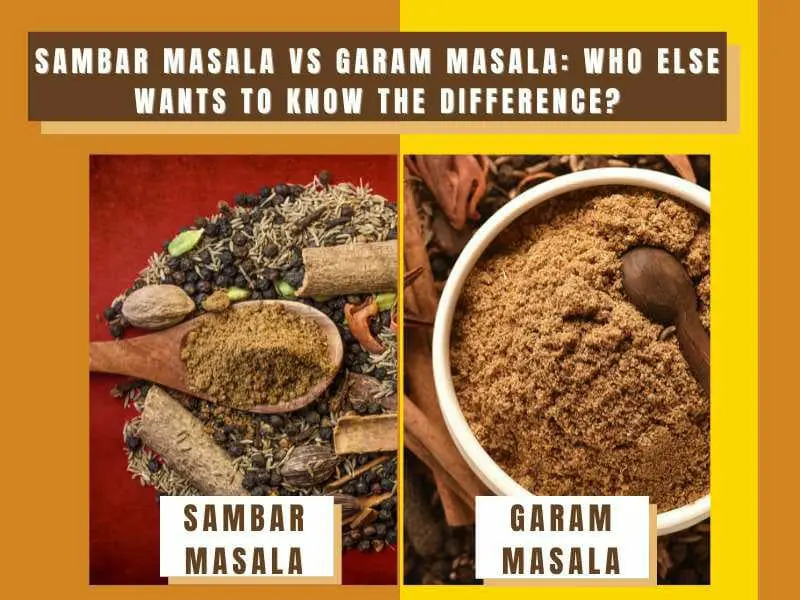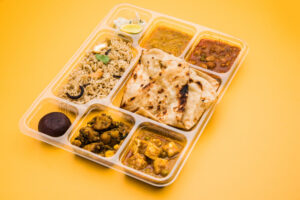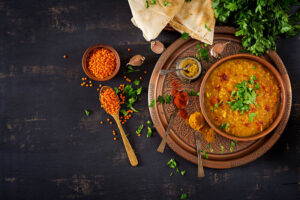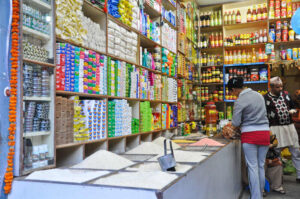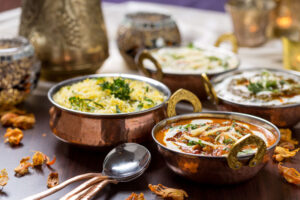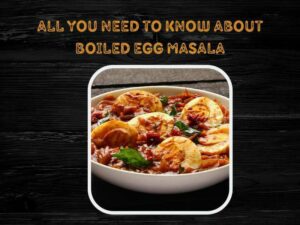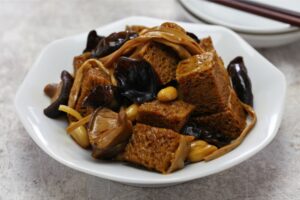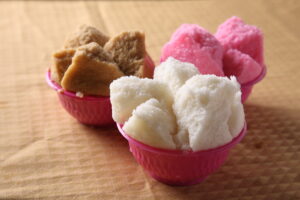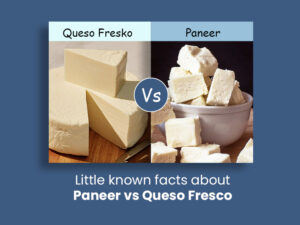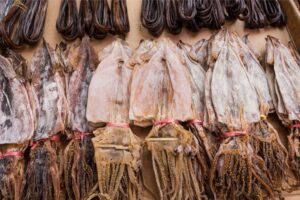From the rich treasure trove of Indian spice blends are two of the most commonly used ones – garam masala and sambar masala. The mouth-watering dishes resulting from the addition of these spices has gained popularity worldwide. Want to know more about these rich spice mixes? Read on about sambar masala vs garam masala.
What is Sambar Masala?
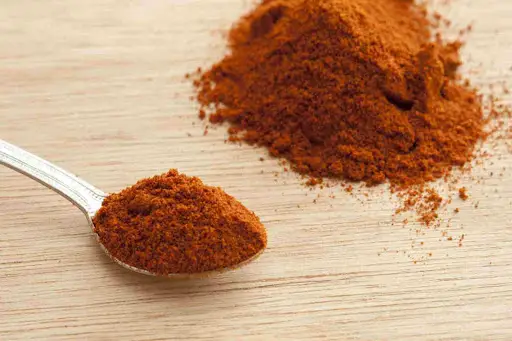
The flavorful and aromatic sambar masala is a South Indian style coarse textured spices powder. It is used to prepare various types of sambar, typically cooked with vegetables and lentils.
It is very easy to make.
What is Garam Masala?
A blend of hot spices, garam masala is a popular North Indian spice mix that enhances the flavor of several Indian foods. It is typically added towards the end of the cooking process of several Indian dishes.
Here’s a video showing how to make garam masala. Often, there are several variations of garam masala, with lesser or more spices.
It is essential to know the difference between curry vs masala.
While used in fewer quantities in dishes, there are some health benefits of garam masala. Here are the ones listed by the brand NBK:
Is Garam Masala the Same as Sambar Powder?
No, garam masala isn’t the same as sambar powder. Unlike garam masala, which includes only whole spices, sambar powder is made with roasted lentils that give it an umami flavor of great depth.
What Are the Differences Between Garam Masala and Sambar Powder?
| Garam Masala | Sambar Masala | |
| Origin | North India | South India |
| Use | A broad range of recipes | Only for sambar |
| Quantity Used | Smaller quantities | In tablespoons |
| When is it added | Towards the end of the cooking process | Early in the cooking process |
| Key Ingredients | Only uses whole spices | Uses lentils, along with other spices |
Sambar Masala vs Garam Masala: Origins
The origin of sambar is believed to be in the kitchen of Thanjavur. In the 17th century, the Maratha ruler Shahuji, experimented with pigeon peas and tamarind pulp. It was named sambar after the guest of the day, Sambhaji, the second emperor.
The word sambar stems from the Tamil word ‘Champaaram’, meaning ‘spicy condiments’.
Garam masala originated in North India, with some having traced its first use to the Mongol Empire in the 13th century. The cold winters of Northern India called for spices with a warming quality that led to the creation of garam masala.
Sambar Powder Recipe
Sambar masala can be used for breakfast (Dosa + chutney + sambar).
Homemade Sambar Masala and Dosa chutney sambar for breakfast ????#MondayMotivaton #breakfast #dosa #sambar #coconutchutney #homemade #Indian #food #southIndianfood #healthy #cook #StayAtHomeAndStaySafe #fresh #foodphotography #foodblogger #Indianblogger #Quarantine #StayHome pic.twitter.com/FSpqmKzAxQ
— Nupur Choudhury (@Nupurkitchen) March 30, 2020
There are multiple variations of the sambar powder recipe with lesser or more ingredients. These ingredients are typically present in a spice cabinet.
One of the simpler recipes needs the following ingredients:
- 1 tbsp toor dal (pigeon peas split)
- 1 1/2 tbsp black gram (skinned urad dal)
- 1 1/2 tbsp bengal gram (chana dal)
- 1/4 tsp turmeric powder
- 1/8 tsp asafoetida
- 1 tsp black peppercorn
- 2 tsp cumin seeds
- 2 sprigs of fresh curry leaves
- 3/4 tsp fenugreek seeds
- 1/4 cup coriander seeds
- 8 – 12 red chilies (adjust to taste)
Here are the steps to prepare this highly aromatic sambar powder:
- In a pan, dry roast the toor dal, black gram, bengal gram, and red chilies on low flame until the lentils turn golden.
- Add the fenugreek seeds, black pepper, and coriander seeds.
- Saute till the fenugreek seeds turn slightly dark and aromatic, and the coriander seeds turn crunchy.
- Add the curry leaves and stir until they turn crisp.
- Next, add the cumin seeds and saute till they turn crunchy. At this point, turn off the flame.
- Add the asafoetida and turmeric powder and transfer to a wide plate for cooling.
- Blend all these roasted spices in a spice grinder or coffee grinder and ingredients to a fine powder. Store in an air-tight container.
Garam Masala Recipe
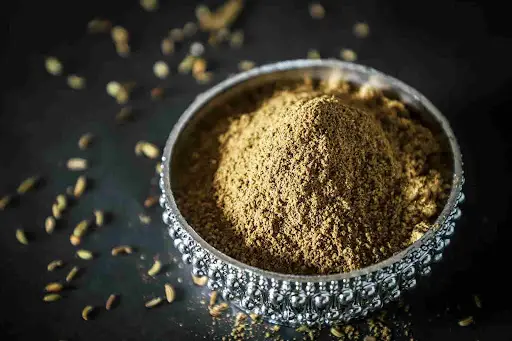
It is best to make garam masala in small batches to retain its freshness, flavor, and aroma. Here are the ingredients you’ll need for making garam masala:
- 1/2 tbsp dried ginger powder
- 2 tbsp caraway seeds
- 1/4 cup bay leaves
- 10 cinnamon sticks (50 mm each)
- 2 tbsp cloves
- 3 tbsp fennel seeds
- 1/4 cup coriander seeds
- 1/4 cup black peppercorns
- 1/2 cup cardamoms
- 1/2 cup cumin seeds
The procedure to prepare this aromatic spice blend is pretty simple:
- Except for dried ginger powder, take all other ingredients in a broad non-stick pan and dry roast on a medium flame for 2 – 3 minutes, with constant stirring.
- Once the mix has cooled completely, grind to a fine, smooth powder.
- Transfer the ground spices to a bowl and mix in the dried ginger powder.
- Sieve the spice mix and discard left-over coarse powder.
- Store in an air-tight container.
Can Garam Masala be Used Instead of Sambar Powder?
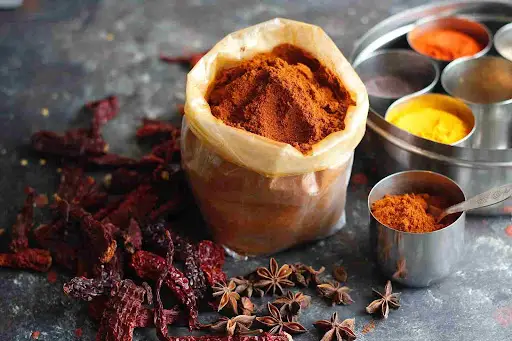
It isn’t suggested to use garam masala instead of sambar powder, owing to the significant differences in their blend of ingredients and depths in flavors of sambar masala vs garam masala.
What is a Good Garam Masala Substitute?
There are other spice mixes that you could substitute for garam masala. Here’s a list of the ones that are good alternatives to this blend of spices with complex flavors:
- Curry powder (Read madras curry powder vs garam masala)
- Chaat masala
- Allspice and cumin blend (1:4 ratio)
- Ras El Hanout (Read garam masala vs ras el hanout)
- Sambar masala
- Tikka masala
- Tandoori masala (Read tandoori masala vs garam masala)
- Pumpkin pie spice blend
- Homemade garam masala (use fresh spices)
What Can I Use Instead of Sambar Masala?
Here are some excellent substitutes for sambar powder:
- Rasam powder (the best one)
- Chaat masala
- Madras curry powder
- Vindaloo curry powder
Can I Make Mixed Vegetable Sambar With Garam Masala?
Yes, you can. However, the taste, while not the same, will still be good, owing to the differences in the blends of sambar masala vs garam masala.
Sambar powder can be replaced by other spices such as coriander powder, garam masala with red chili powder, and turmeric to make it more like mixed vegetable dal.
Where to Buy Garam Masala and Sambar Powder?

The most common place to come across these spice blends is at any Indian store. You could also check online for a variety of brands that sell these spice powders.
You can find good garam masala from the best shahi paneer masala brand as well. Worst case, you could blend your own spice mix using individual spices in your spice cabinet.
